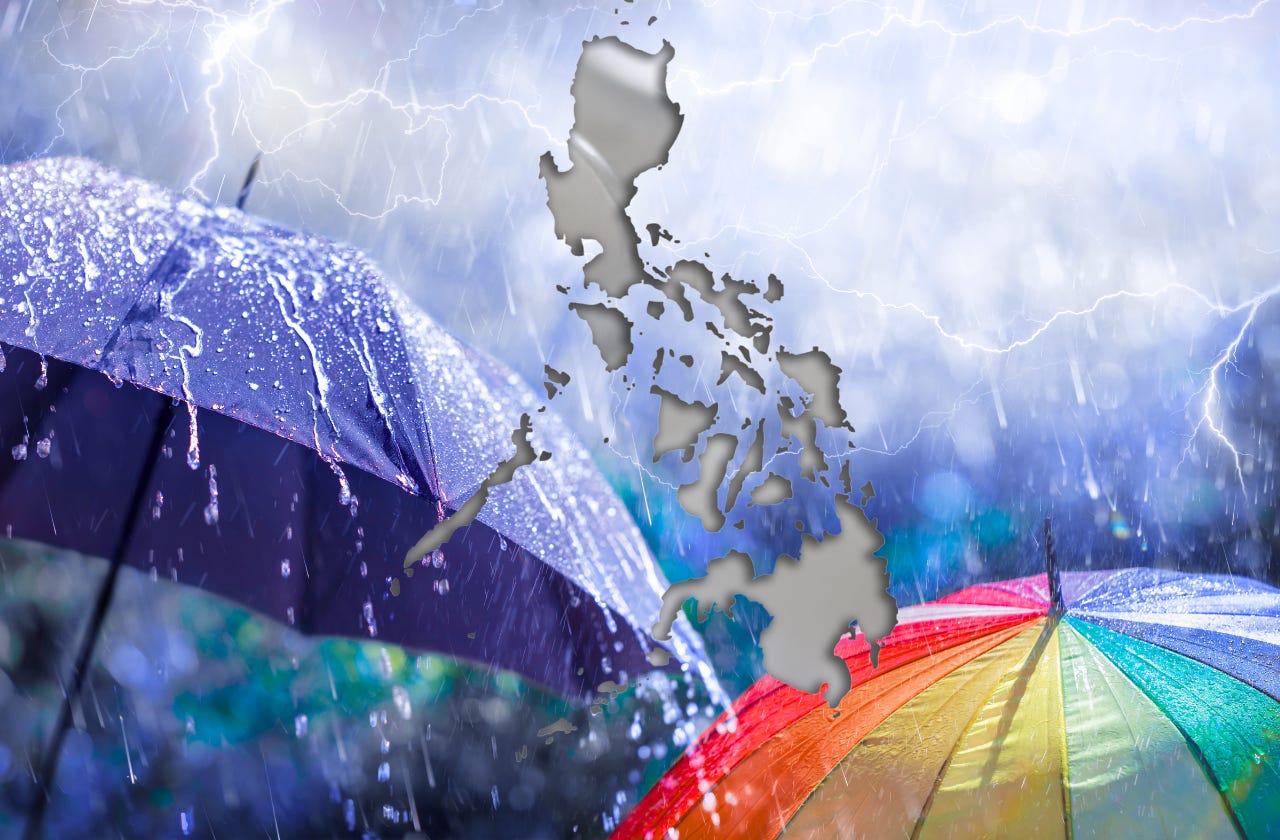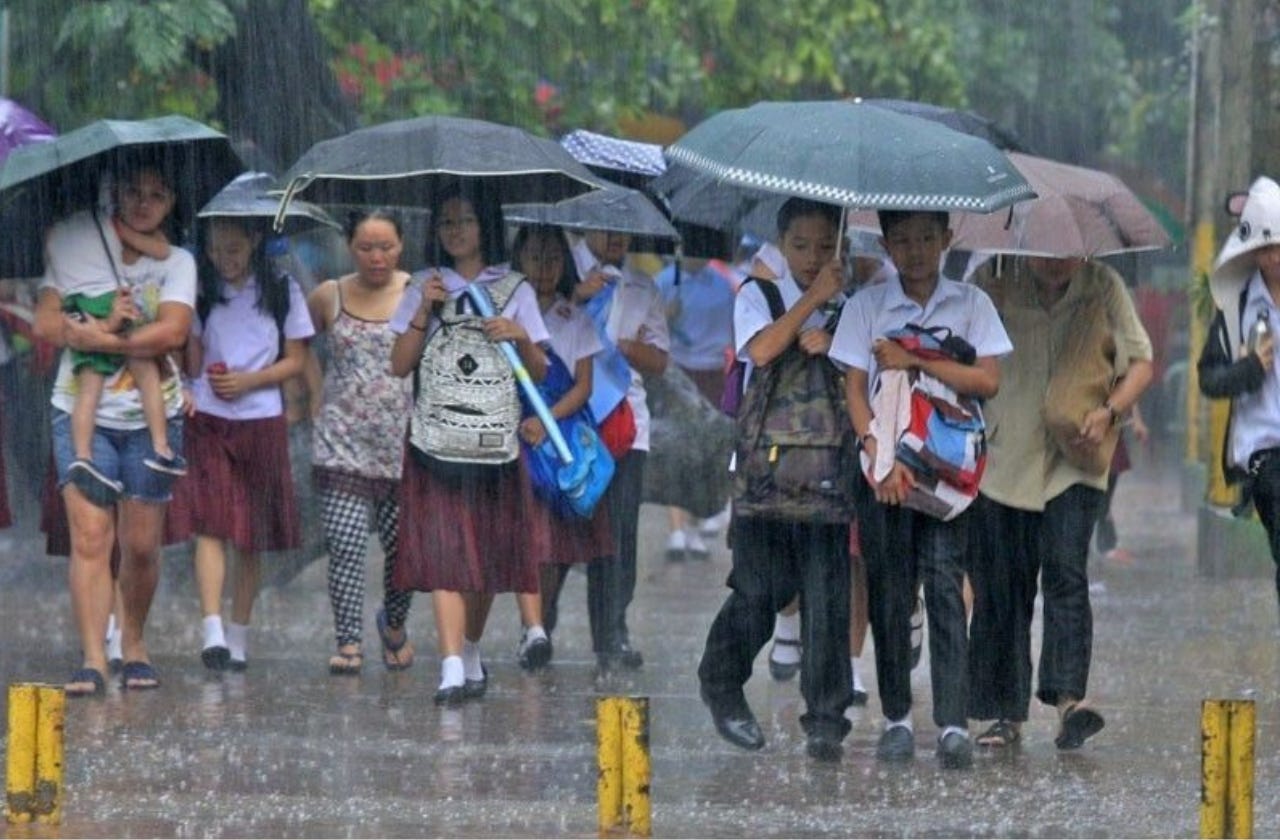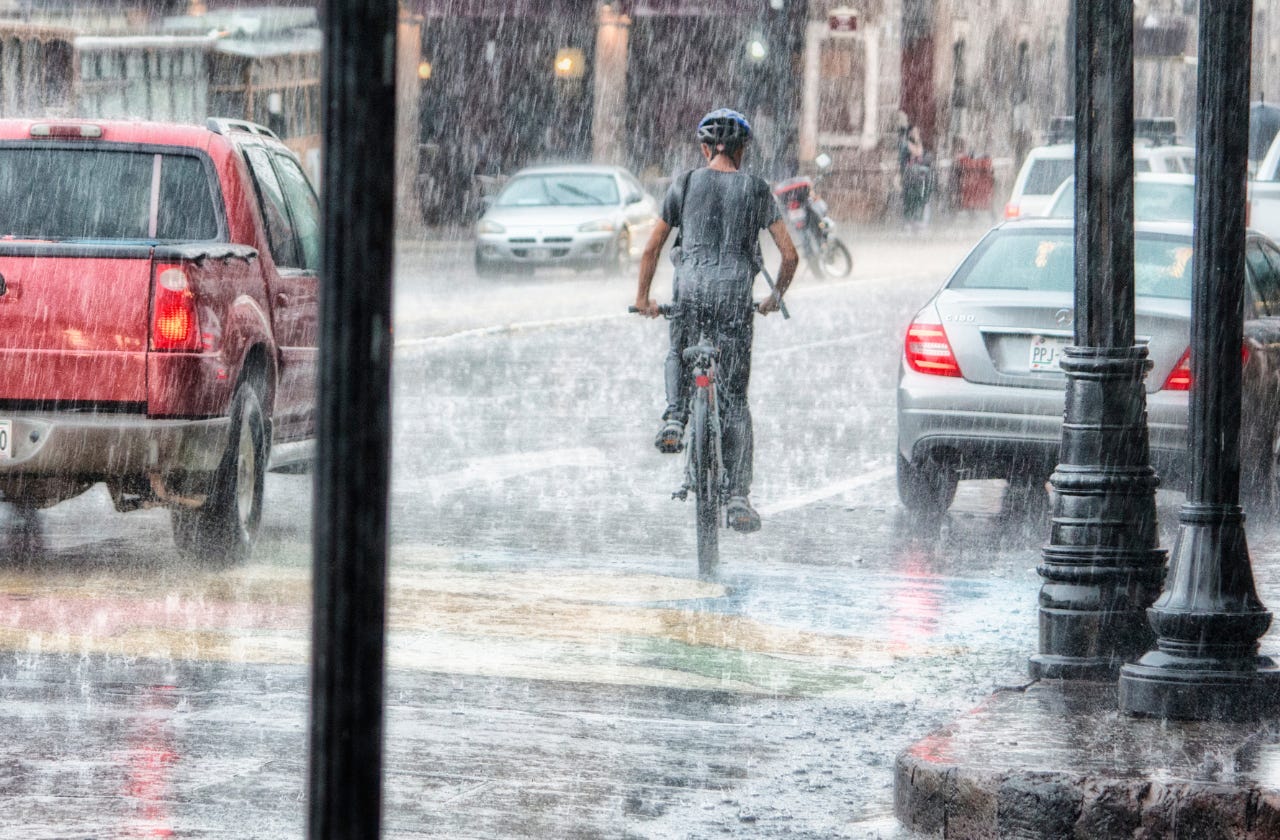The Philippine Rainy Season
A look into the life, culture, and resilience of the Filipinos during the wet season.
From June to August, the Philippines enters its rainy season, bringing not just rainfall but a rhythm of life distinctly shaped by the weather. Growing up, rainy season meant two critical words for every Filipino student: class suspensions. If the storm warning hit Signal #2 or higher, the whole city seemed to heave a collective sigh of relief.
School uniforms stayed dry, and notebooks happily gathered dust at home. On these unexpected holidays, families huddled at home, sipping warm cups of champorado topped with a thick layer of powdered milk, or savory and sour sinigang, while the television murmured the latest updates on the storm.
Rainy Birthdays
Every birthday I've celebrated in the Philippines has been serenaded by thunderstorms and rainfall—a sprinkle, a drizzle, sometimes a thunderous applause from the skies. I've come to affectionately call this my "divine confetti," because who doesn’t want to be the main character in their own slightly delusional romantic comedy, right?
But beyond these cozy scenes, the rainy season significantly impacts daily Filipino life. Traffic slows to a crawl, roads often flood, and umbrellas become indispensable companions. Fragile warriors against whipping winds and relentless rain. Commuters navigate puddles-turned-mini lakes, and the brave souls who forget their umbrellas can be seen making mad dashes through the streets, laughter mixed with frustration as they arrive soaked at their destinations.
Daily Commutes and Weathering the Storm
For the working members of society, the rainy season presents unique challenges. Employees often wake earlier to accommodate unpredictable commutes, knowing well that a storm can double their usual travel time. Office routines are disrupted, meetings are rescheduled, and productivity can take a dip when everyone arrives drenched, shaking off umbrellas at the entrance.
Businesses, particularly street vendors and small shops, face significant impacts as fewer customers brave the weather. Conversely, businesses selling rain gear and comfort foods find themselves thriving during these wet months.
Students experience the rainy season with a mix of anxiety and excitement. Aside from the joy of potential class suspensions, the uncertainty of daily routines can become stressful. Assignments and exams might get postponed, causing scheduling chaos.
Yet, these unpredictable days often become memorable, spent bonding with friends, sharing stories, playing indoor games, or even studying together through video calls and group chats.
Homemakers and Neighborhood Resilience
Daily life during the rainy season also shifts dramatically for homemakers and caretakers. Keeping homes dry becomes a constant battle, with buckets strategically placed under dripping ceilings and towels ready at every entrance. Meal planning revolves around dishes that provide warmth and comfort, from hearty stews and soups to steaming hot rice cakes.
Neighborhood interactions intensify during these months; neighbors help each other with minor flooding issues, lend supplies when stores become inaccessible, and build a stronger sense of community.
Public transportation becomes particularly challenging. Jeepneys and buses pack tightly with damp passengers seeking refuge from the storm, windows fogging up and floors slick with rainwater. Tricycle and motorcycle drivers, bravely navigating through flooded streets, become everyday heroes for commuters stranded by limited transportation options.
Those who drive their own vehicles face the nerve-wracking task of navigating through waterlogged streets, ever vigilant against potholes hidden beneath murky waters.
Farm and Cultural Impact
Filipino cultural traditions also adapt to the rainy season. Farmers eagerly anticipate the rains, seeing them as blessings essential for their crops. Festivals and events scheduled during these months often require last-minute adjustments, showcasing the Filipino knack for adaptability and resourcefulness. Communities gather to reinforce their homes, share resources, and prepare emergency supplies, diligently following PAGASA bulletins for updates.
Entertainment and media consumption shift significantly indoors. Families bond over binge-watching favorite Filipino teleseryes, animatedly playing board games like Sungka or Monopoly, or cozying up with good books. The rainy season transforms ordinary days into opportunities for creating cherished family moments and rediscovering simple pleasures.
Finding Warmth and Wonder
Yet there's also something undeniably comforting and communal about the rain. The sound of raindrops tapping on tin roofs becomes a universal lullaby. Conversations deepen, stories flow freely, and connections strengthen when everyone is forced indoors, sharing space and time against the backdrop of a relentless storm.
Indeed, despite its challenges, the rainy season has a unique charm that captivates Filipinos year after year. It invites introspection, creativity, and a slower pace of life, where time indoors becomes precious and meaningful. Perhaps it's these very contradictions. The discomfort paired with coziness, the frustration balanced by laughter that make the rainy season so unforgettable.
So next time the clouds gather and the skies darken, I might just step outside and twirl under my divine confetti, embracing the beauty of being exactly where I am, main character energy and all.






Pagmasdan ang dilim unti-unting bumabalot :)!